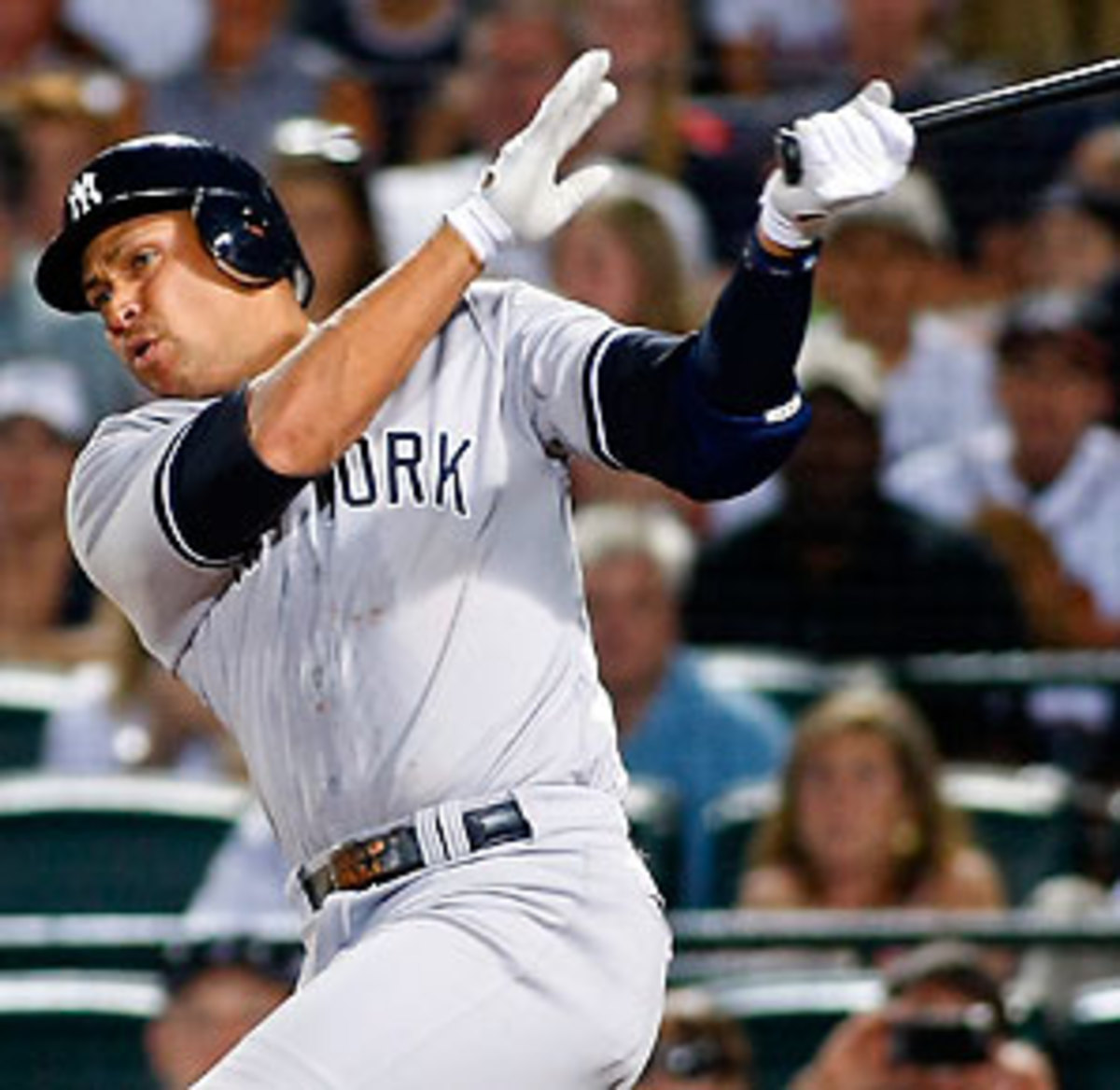A-Rod slams critics by tying Gehrig

Alex Rodriguez's 23rd career grand slam came at an ideal time for the Yankees, tying the game in the eighth inning Tuesday night. (Reuters)

The Yankees were trailing 4-0 with the bases loaded and one out in the top of the eighth inning in Atlanta Tuesday night when Alex Rodriguez lined a full-count sinker from Jonny Venters over Turner Field’s left-field wall for a grand slam. That well-timed blast not only tied the game, it tied Lou Gehrig’s 74-year-old record for the most career grand slams in major league history at 23. The perception of Rodriguez as a player who wilts in the clutch is one that carries a lot of baggage, including confirmation biases, self-fulfilling prophesies, Rodriguez’s likeability or lack thereof and the concept of clutch hitting as a repeatable skill. Rodriguez’s performance in the 2009 postseason alone —he hit .365/.500/.808 with six home runs and 18 RBIs across 68 plate appearances, a huge part of why the Yankees took home the Commissioner’s Trophy that year—did a lot to silence his critics. Tying Gehrig for the grand slam record should finish the job.
A-Rod's latest achievement may not seem all that surprising. After all, he has hit a lot of home runs, so it only makes sense that a fair number of them were grand slams. His record-tying slam on Tuesday night was the 639th round-tripper of his career, good for fifth on the all-time list. However, none of the four men ahead of him on that list (Barry Bonds, Hank Aaron, Babe Ruth and Willie Mays) hit more than 16 grand slams, a total achieved by both Aaron and Ruth. What allowed Rodriguez to tie the record while still more prolific home run hitters failed to do so was a combination of clutch hitting and, equally important, clutch opportunities.
In general, when the bases are loaded, hitters tend to hit for a higher average and for more power but with a lower on-base percentage, the result of pitchers being on the ropes and forced to throw strikes. For example, last year, the average major leaguer hit .255/.321/.399 overall, but .270/.308/.420 with the bases loaded. Rodriguez’s career splits show a similar effect, but the increase in his average and power numbers is far more dramatic. Including Tuesday night’s game, Rodriguez is a career .301/.386/.564 hitter but has hit a tremendous .346/.393/.706 in 281 career plate appearances with the bases loaded. By comparison, Aaron and Mays, who have comparable career slash stats to Rodriguez, hit .308/.309/.571 and .314/.351/.522, respectively, with the bags juiced (though that data is admittedly incomplete because complete play-by-play data for every game only goes back to 1974).
Impressive as Rodriguez’s career performance with the bases loaded may be, grand slams are an opportunity-dependent statistic that relies heavily on the performance of a player’s teammates (putting it in a class with runs batted in, a statistic which has been largely devalued by the sabermetric community). Indeed, since 1974, just six players have had more plate appearances with the bases loaded than Rodriguez. Two of those six, Eddie Murray (who tops the list with 302 PA) and Manny Ramirez, also rank in the top four on the career grand slams list (Ramirez is third at 22, Murray fourth at 19).
Thus, Rodriguez tied Gehrig’s record, which has stood since 1938, not just because he has hit a ton of home runs, but that he has hit a ton of home runs and had a ton of plate appearances with the bases loaded. However, looking back over the period from 1974 to the present, he hasn’t been far and away the best home run hitter with the bases loaded. In fact, among hitters with 100 or more plate appearances with the bases loaded over that span, he ranks seventh on the list of fewest plate appearances per grand slam:
Player | PA | HR | PA/HR | |
|---|---|---|---|---|
1. | Travis Hafner | 120 | 12 | 10.0 |
2. | Dave Kingman | 167 | 16 | 10.4 |
3. | Richie Sexson | 162 | 15 | 10.8 |
4. | Albert Belle | 145 | 13 | 11.2 |
5. | Mark McGwire | 165 | 14 | 11.8 |
6. | 121 | 10 | 12.1 | |
7. | Alex Rodriguez | 281 | 23 | 12.2 |
8. | Carlos Lee | 196 | 16 | 12.3 |
All statistics with bases loaded, only. Kingman’s numbers include the 1971-1973 seasons.
Hafner hit half of his grand slams in 2006, tying Don Mattingly’s single-season record of six set in 1987, despite coming to the plate just 16 times with the bases loaded that season. Mattingly had 21 PA with the bases laoded in ‘87.
Get used to marking Rodriguez’s milestones, by the way. He’s no longer a lock to break the all-time home run record (he needs 123 to tie Bonds' mark of 762 and injuries have been sapping his power and playing time in recent seasons), but he is now just 21 homers shy of Mays’ famous 660, and 163 hits shy of 3,000 and should reach both totals next year. With five-plus years left on his contract, he could get the home run record by averaging fewer than 24 round-trippers a year and could break Hank Aaron’s career record for RBIs by averaging fewer than 75 per season (he’s 375 behind). Oh, and every grand slam he hits from here on out will set a new career record.
Not bad for a guy who can't hit in the clutch.
-- By Cliff Corcoran
